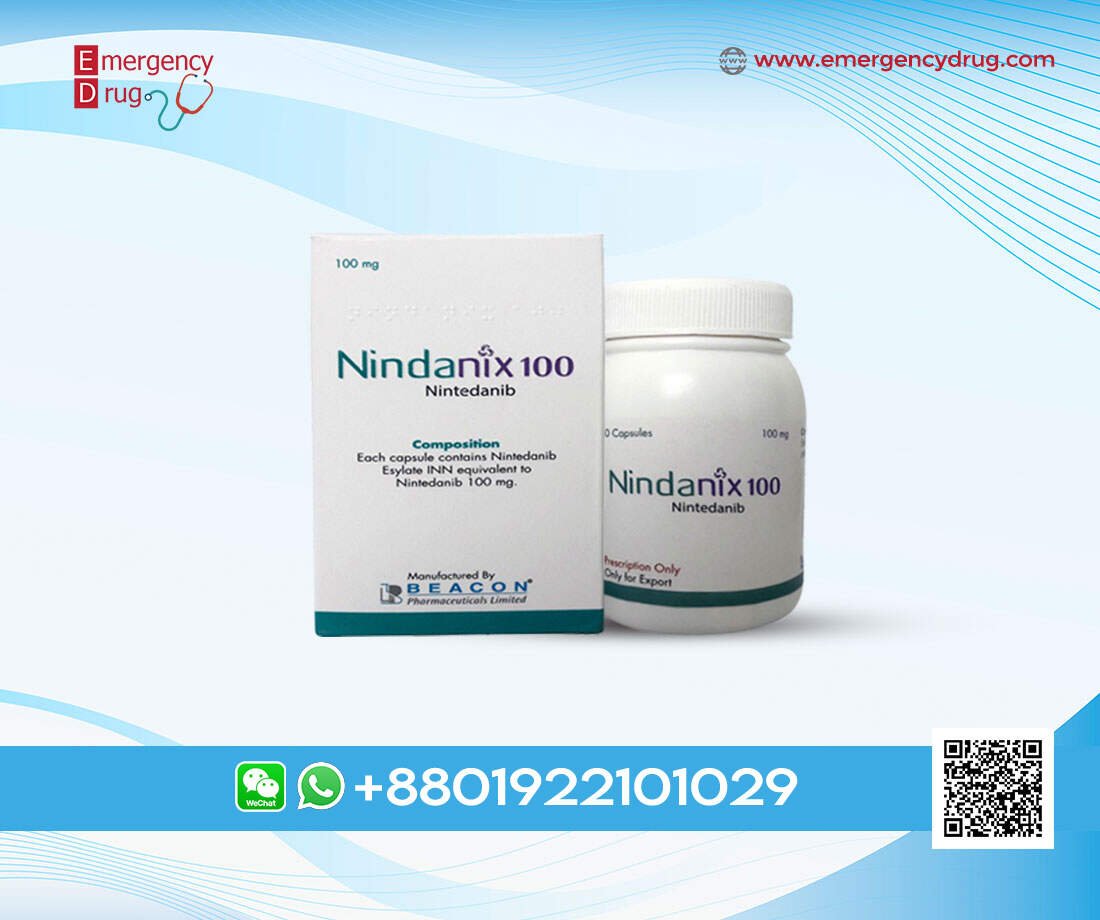엘보닉스 25mg (엘트롬보팍) 경구용 정제는 브랜드 의약품이며, 일반 의약품 형태로는 제공되지 않습니다. 엘보닉스 25mg은 경구 정제와 경구 현탁액 두 가지 형태로 제공됩니다. 엘트롬보팍은 경구로 복용 가능한 소분자 TPO(트롬보포이에틴) 수용체 작용제로, 인간 TPO 수용체의 막관통 부위에 결합합니다. 엘보닉스 25mg은 STAT와 JAK의 인산화를 자극합니다. 재조합 TPO나 로미프로스팀과 달리 엘트롬보팍은 AKT 경로를 활성화하지 않습니다. 재생불량성 빈혈 환자에게 투여했을 때, 혈소판 수 외에 다른 계열의 혈구 수치도 증가한 점에 주목할 필요가 있습니다. 이는 엘트롬보팍이 생체 내에서 TPO의 효과를 강화했거나, 아직 알려지지 않은 작용 메커니즘이 있을 가능성을 시사합니다.
엘보닉스 25mg (엘트롬보팍)은 만성 면역성 혈소판감소증(ITP)으로 인해 혈소판 농도가 비정상적으로 낮아져 출혈 또는 멍이 쉽게 생기는 상태를 겪는 아동 환자 중 다른 약물로 치료가 불가능한 경우 혈소판 수를 증가시키는 데 사용됩니다. 또한, 엘보닉스 25mg은 간에 손상을 주는 바이러스 감염인 C형 간염 환자에서 인터페론(페그인터페론, 페그인트론 등) 및 리바비린(레베톨)을 투여할 수 있도록 혈소판 수를 증가시키는 데 사용됩니다. 성인 및 소아에서 재생불량성 빈혈(체내에서 대체 혈구를 충분히 생산하지 못하는 상태)을 치료하는 데도 사용됩니다. 재생불량성 빈혈 치료는 다른 약물로 치료할 수 없는 성인을 대상으로 합니다. 엘보닉스 25mg 외에도 트롬보포이에틴 수용체에 작용하는 여러 약물이 있습니다. 이 약물은 골수에서 혈소판 생성을 증가시켜 혈소판 생성을 억제하는 작용을 합니다.
엘보닉스 25mg 의 용도
엘보닉스 25mg (엘트롬보팍)은 특정 질환에서 혈소판 수치를 증가시키는 데 사용되는 약물입니다:
만성 면역성 혈소판감소증 (ITP):
이는 면역 체계가 혈소판을 파괴하여 출혈 위험을 초래하는 질환입니다. 엘보닉스 25mg은 다른 치료법이나 수술에 잘 반응하지 않는 환자에게 투여됩니다.
C형 간염으로 인한 혈소판 감소:
만성 C형 간염 감염 환자에서 혈소판 수치를 증가시키기 위해 사용됩니다. 특히 페길화 인터페론 및 리바비린 치료를 받는 환자에게 도움이 됩니다.
중증 재생불량성 빈혈:
이 질환은 골수가 충분한 혈구를 생산하지 못하는 심각한 상태입니다. 엘보닉스 25mg은 다음 두 가지 방식으로 사용될 수 있습니다:
- 첫 번째 치료 옵션: 때로는 다른 약물과 함께 중증 재생불량성 빈혈의 첫 번째 치료제로 사용됩니다.
- 다른 치료에 반응하지 않는 경우: 다른 약물이 효과가 없는 경우 단독으로 사용할 수 있습니다.
중요 사항:
엘보닉스 25mg은 골수형성이상증후군(MDS)이라는 질환을 치료하는 데 사용해서는 안 됩니다.
엘보닉스 25mg의 작용 방식
엘보닉스 25mg은 트롬보포이에틴(TPO) 수용체 작용제라는 유형의 약물입니다. 이 그룹의 약물은 유사한 방식으로 작용하며 관련 질환을 치료하는 데 사용됩니다.
엘보닉스 25mg은 골수에서 혈소판(혈액 응고를 돕는 세포)을 더 많이 생성하도록 돕습니다. 혈소판 수치를 증가시킴으로써 출혈 위험을 줄입니다.
엘보닉스 25mg을 복용 중에 비정상적인 출혈이나 멍이 발견되면 즉시 의사와 상담하십시오. 특히 혈액 희석제를 함께 사용 중인 경우, 의사가 복용을 중단하도록 지시할 수 있습니다.
부작용
엘보닉스 25mg (엘트롬보팍)은 경미하거나 심각한 부작용을 유발할 수 있습니다. 아래는 이 약을 사용하는 동안 발생할 수 있는 일반적인 부작용 목록입니다. 그러나 이는 모든 가능한 부작용을 포함하지 않습니다.
더 많은 부작용 정보가 필요하거나 불편한 증상을 관리하는 방법에 대해 조언이 필요하면 의사나 약사와 상담하십시오.
일반적인 부작용
- 빈혈(적혈구 수치 감소)
- 메스꺼움
- 발열
- 피로감
- 기침
- 두통
- 설사
- 독감과 유사한 증상
- 식욕 상실
이러한 부작용은 대개 경미하며 며칠 또는 몇 주 후에 저절로 사라질 수 있습니다. 증상이 개선되지 않거나 심각하게 느껴질 경우, 의사나 약사에게 알리십시오.
부작용 위험을 증가시키는 상호작용
엘보닉스 25mg (엘트롬보팍)과 함께 복용할 경우 부작용 위험을 증가시킬 수 있는 약물이 있습니다. 이러한 약물에는 다음이 포함됩니다:
특정 약물:
보센탄, 에제티미브, 글리부라이드, 올메사르탄, 레파글리니드, 리팜핀, 발사르탄, 이마티닙, 이리노테칸, 라파티닙, 메토트렉세이트, 미톡산트론, 설파살라진, 토포테칸 등이 예입니다. 필요 시, 의사가 이러한 약물의 용량을 줄일 수 있습니다.
콜레스테롤 저하제:
로수바스타틴, 아토르바스타틴, 플루바스타틴, 피타바스타틴, 프라바스타틴, 심바스타틴 등이 해당됩니다. 엘보닉스와 함께 복용 시 근육통을 유발할 수 있습니다. 의사가 콜레스테롤 저하제의 용량을 조정할 수 있습니다.
효능을 감소시키는 상호작용
일부 약물이나 보충제는 체내 엘보닉스 25mg의 농도를 낮춰 약물의 효과를 감소시킬 수 있습니다. 이러한 약물에는 다음이 포함됩니다:
제산제, 비타민 또는 보충제:
칼슘, 알루미늄, 철, 셀레늄, 아연 또는 마그네슘을 함유한 제품은 엘보닉스 25mg의 작용에 영향을 줄 수 있습니다. 이를 방지하려면, 엘보닉스 25mg을 이러한 제품을 복용하기 최소 2시간 전 또는 4시간 후에 복용하십시오.
복용 중인 약물이나 보충제에 대해 의사와 상담하여 문제를 예방하십시오.
일반적인 경고 사항
엘보닉스 25mg (엘트롬보팍)을 복용하기 전에 알아야 할 중요한 안전 경고는 다음과 같습니다:
질환 악화 경고
골수형성이상증후군(MDS)이 있는 경우 이 약을 복용하지 마십시오. 이 약은 상태를 악화시켜 급성 골수성 백혈병(AML)이라는 더 심각한 혈액암으로 이어질 수 있습니다. 또한 사망 위험을 증가시킬 수 있습니다.
혈전 경고
엘보닉스 25mg은 혈소판 수치를 증가시켜 혈전이 생길 위험을 높일 수 있습니다. 혈전 위험 요인이 있는 경우, 이 약이 안전한지 의사와 상담하십시오.
백내장 경고
이 약은 백내장(눈의 수정체 혼탁)을 유발하거나 기존 백내장을 악화시킬 수 있습니다.
- 치료 시작 전 및 치료 중 의사가 눈을 검사할 것입니다.
- 백내장이 발생하면 의사가 복용량을 줄이거나 약물 사용을 중단할 수 있습니다.
알레르기 반응 경고
엘보닉스 25mg은 다음과 같은 심각한 알레르기 반응을 일으킬 수 있습니다:
- 호흡 곤란
- 목이나 혀의 부기
- 발진 또는 가려움
이러한 증상이 나타나면 즉시 응급 치료를 받으십시오. 생명을 위협할 수 있으므로, 이전에 이 약에 알레르기 반응이 있었다면 다시 복용하지 마십시오.
음식 상호작용 경고
칼슘 함량이 높은 음식(우유, 치즈 등 유제품)은 이 약의 효과를 저하시킬 수 있습니다.
- 칼슘이 많은 음식을 섭취하기 최소 2시간 전 또는 4시간 후에 엘보닉스 25mg을 복용하십시오.
특정 건강 상태에 대한 경고
- 골수형성이상증후군(MDS): MDS가 있는 경우 이 약을 복용하지 마십시오. 상태를 악화시키고 AML이나 사망으로 이어질 수 있습니다.
- 간 문제: 간 질환이 있는 경우 이 약이 상태를 악화시킬 수 있습니다. 의사가 안전 여부를 판단할 것입니다.
- 혈전 관련 질환: 이 약은 혈전 위험을 증가시키므로 혈전 관련 병력이 있는 경우 의사와 상담하십시오.
항상 복용을 시작하기 전에 의사와 병력 및 우려 사항에 대해 논의하십시오.
특정 그룹에 대한 경고
임산부
엘보닉스 25mg (엘트롬보팍)이 인간의 임신에 미치는 영향에 대한 충분한 연구는 없습니다. 동물 연구에서는 유해한 영향을 보였으나, 이는 항상 인간에게 동일하게 적용되지는 않습니다.
- 임신 중이거나 임신을 계획하고 있다면, 의사와 상담하십시오. 이 약은 잠재적인 이점이 위험보다 클 경우에만 사용해야 합니다.
- 엘보닉스 25mg을 복용 중에 임신하게 되면 즉시 의사에게 연락하십시오.
수유부
엘보닉스 25mg은 수유 중에는 권장되지 않습니다. 이 약은 모유로 전달되어 아기에게 해를 끼칠 수 있습니다.
- 수유 중이라면 의사와 상담하십시오. 수유를 중단하거나 약물 복용을 중단하는 것 중 선택이 필요할 수 있습니다.
노인(65세 이상)
노인은 간과 신장이 약물을 처리하는 속도가 느릴 수 있어 부작용 위험이 더 높아질 수 있습니다. 이는 약물이 체내에 더 오래 남아 부작용 가능성을 증가시킬 수 있습니다.
소아
- 만성 면역성 혈소판감소증: 이 약은 1세 미만의 어린이에게는 권장되지 않습니다.
- 중증 재생불량성 빈혈: 치료 경험이 없는 중증 재생불량성 빈혈의 경우, 이 약은 2세 미만의 어린이에게 권장되지 않습니다.
- 기타 질환: 만성 C형 간염으로 인한 혈소판감소증이나 난치성 중증 재생불량성 빈혈이 있는 소아에게는 이 약의 안전성과 효과가 입증되지 않았습니다. 이러한 질환에 대해서는 18세 미만의 환자에게 사용해서는 안 됩니다.
복용을 놓친 경우
복용을 놓쳤다면, 다음 예정된 복용 시간에 약을 복용하십시오. 하루에 이 약을 두 번 이상 복용하지 마십시오.

















Reviews
There are no reviews yet.